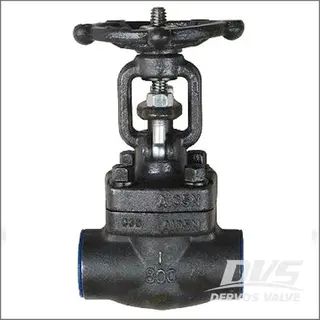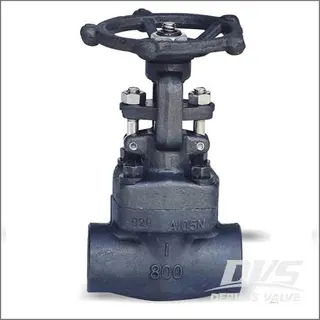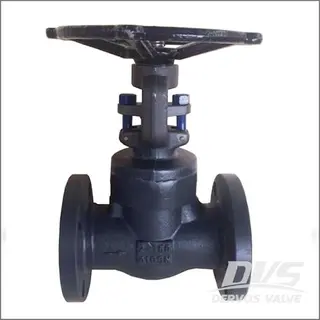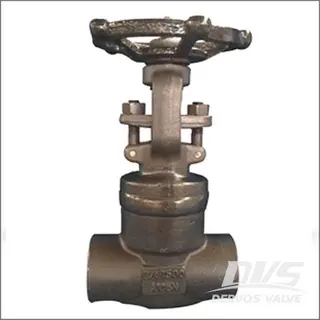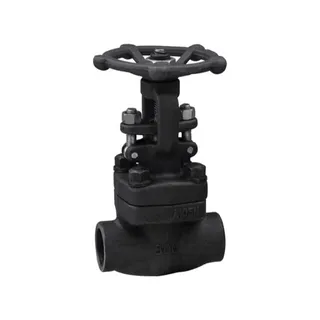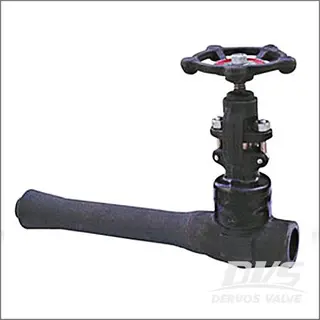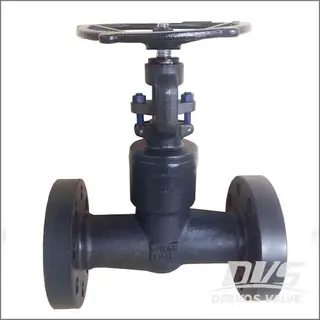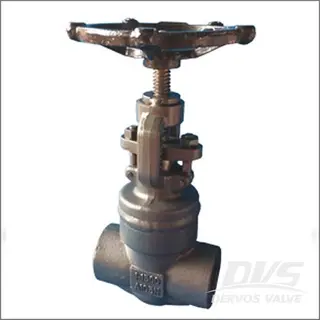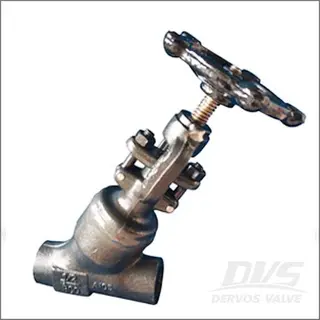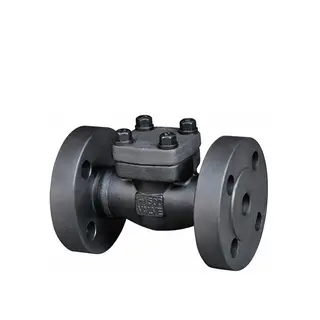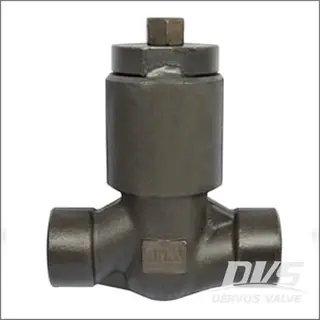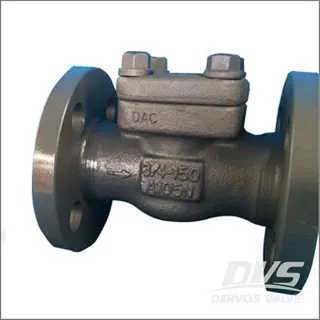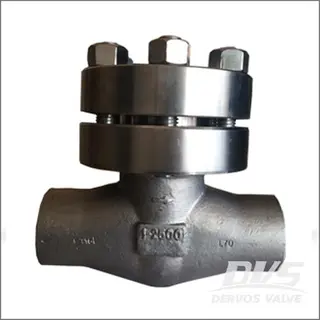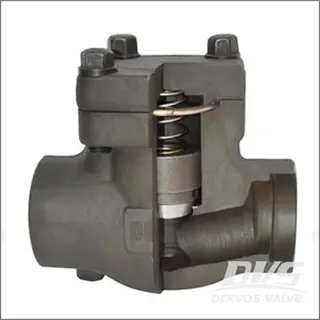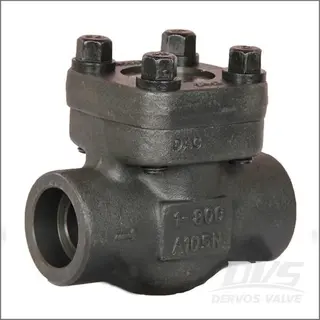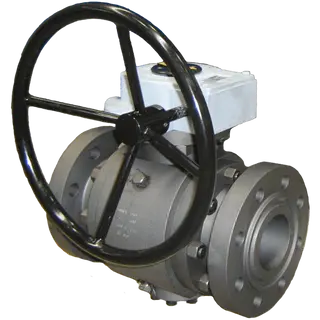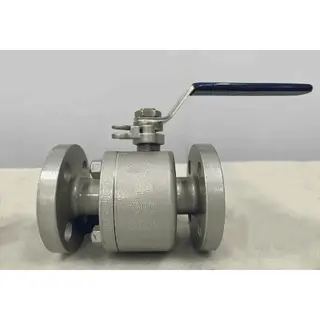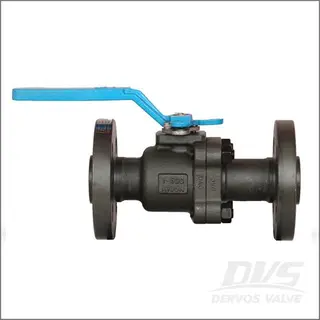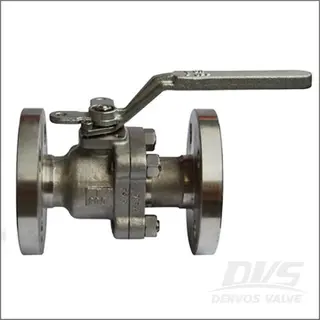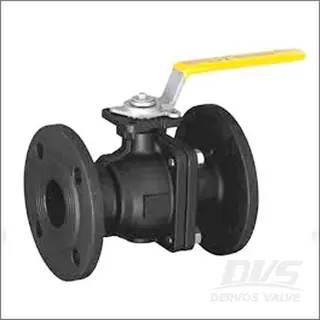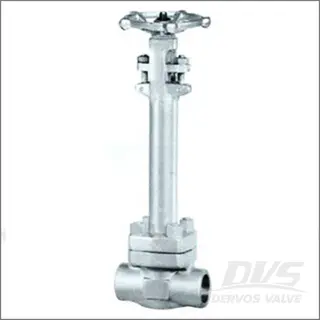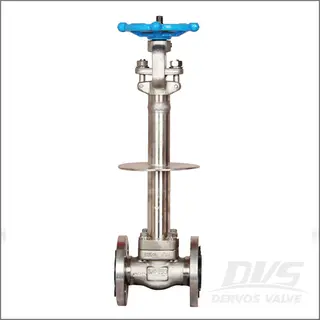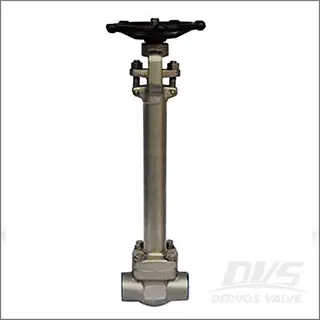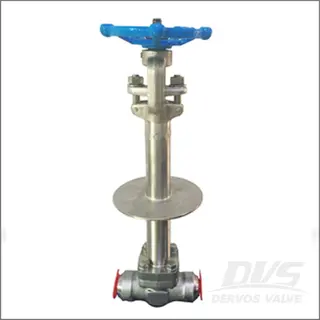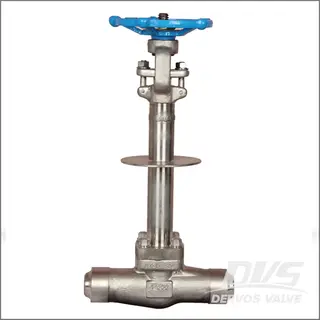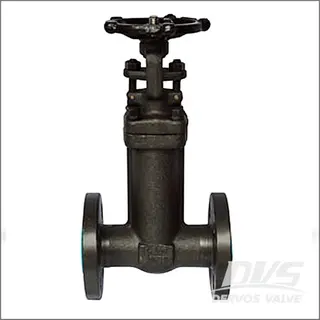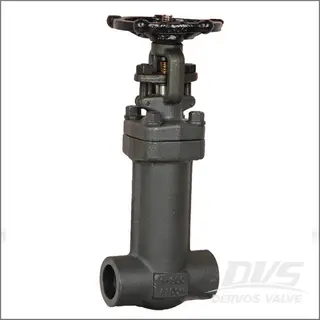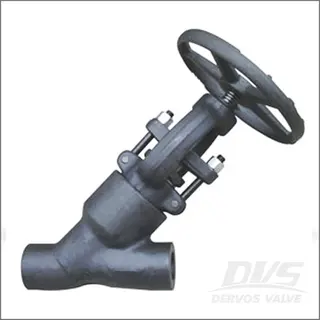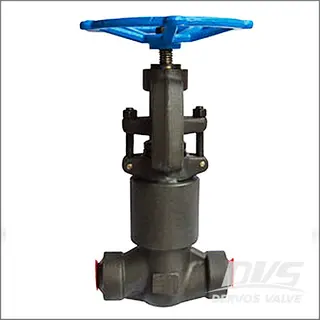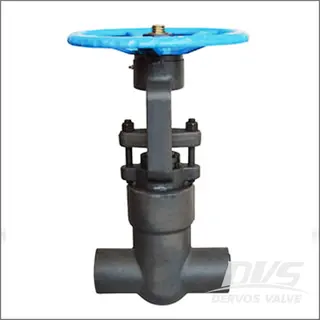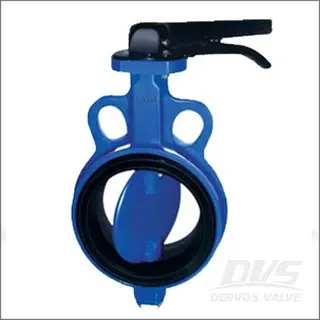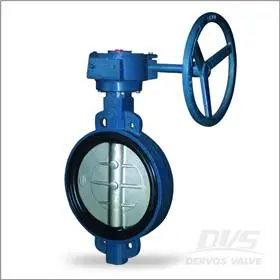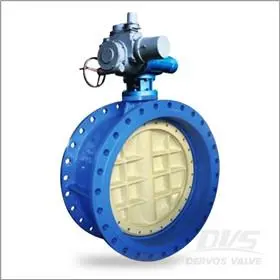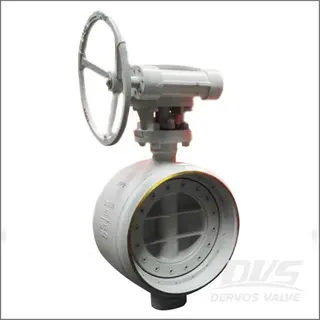Forged steel gate valves encompass all gate valves manufactured using forging materials such as ASTM A105, ASTM A350 LF2, ASTM A182 F5, ASTM A182 F304, ASTM A182 F304L, ASTM A182 F316, and ASTM A182 F316L. These materials ensure high strength, durability, and resistance to extreme conditions, making forged steel gate valves ideal for demanding applications.
Domestically, forged steel gate valves typically refer to small-bore valves with nominal diameters ranging from DN10 to DN50. They are available in common pressure ratings, including German standard PN16 to PN320 and American standard Class 150 to 2500 LB. These valves can be produced and processed according to either American or German standard specifications. Forged steel gate valves with diameters exceeding DN50 are considered custom-made and require specialized manufacturing.
Forged steel gate valves are designed for small-diameter pipelines with pressure ratings from Class 150 to 2500 LB. They operate effectively within a temperature range of -29 to 425°C for carbon steel and -29 to 500°C for stainless steel. These valves are primarily used to cut off or connect media in pipelines, making them a popular choice for oil pipelines and other high-pressure, high-temperature applications. Their robust construction and reliable performance ensure efficient flow control in critical industrial systems.
A Forged Steel Globe Valve is a type of valve where the closure element (valve disc) moves along the centerline of the seat. The movement of the disc directly correlates with the change in the valve seat's port size, making the port adjustment proportional to the disc's stroke. These valves feature a short stem stroke for opening or closing, ensuring reliable shut-off performance and a precise relationship between the seat port and disc movement. As a result, they are highly suitable for applications requiring shut-off, regulation, or throttling.
One of the key advantages of forged steel globe valves is their wear resistance during operation. The friction between the valve disc and the body's sealing surface is minimal compared to gate valves, reducing wear. The open height of the valve is typically only 1/4 of the seat channel's diameter, making it significantly more compact than gate valves. Additionally, the design involves a single sealing surface between the body and disc, simplifying manufacturing and making maintenance easier.
These valves are versatile and can operate in a temperature range of -196°C to 700°C. They are available in various operation modes, including manual, bevel gear, pneumatic, electric, hydraulic, pneumatic-hydraulic linkage, and electro-hydraulic linkage. The body materials include WCB, ZG1Cr18Ni9Ti, ZG1Cr18Ni12Mo2Ti, CF8 (304), CF3 (304L), CF8M (316), CF3M, and Ti (316L), allowing compatibility with a wide range of media such as water, steam, oil, nitric acid, acetic acid, oxidizing agents, urea, and more.
A forged steel check valve is an automatic valve designed to open and close with the flow of the medium, preventing backflow. Also known as a clack valve, non-return valve, one-way valve, or reflux valve, it safeguards pipelines by stopping reverse flow, preventing pump and motor reversal, and facilitating container discharge. These valves are essential in auxiliary supply pipelines where pressure fluctuations may exceed system pressure.
Forged steel check valves come in two main types:
Swing Check Valves – Operate by rotating around a center of gravity.
Lift Check Valves – Move along the axis to regulate flow.
Forged steel components offer superior strength, impact resistance, plasticity, and toughness compared to cast steel, ensuring durability in demanding applications.
Forged steel check valves feature three primary cavity seal types:
The valve body and bonnet are secured with bolts and nuts, sealed using spiral wound gaskets (stainless steel wire with flexible graphite). Metal rings are optional for specific requirements.
The valve body and bonnet are connected with threads and fully welded, ensuring leak-proof performance.
Used in 900 LB, 1500 LB, and 2500 LB valves, where sealing performance improves as internal pressure increases, enhancing reliability.
When fluid flows downstream, the check valve disc opens due to medium pressure. When flow stops, the disc returns to the valve seat by gravity and backflow pressure, preventing reverse flow. The fully sealed structure eliminates external leakage, ensuring long-term performance and reliability.
Forged steel ball valves are designed to regulate the flow of liquids or gases using a floating ball mechanism. The ball is secured between two seats, creating a tight seal when the valve is closed. When open, fluid flows around the ball, allowing for efficient passage.
Constructed through a high-pressure, high-temperature forging process, these valves are crafted from premium materials, ensuring exceptional durability and resistance to wear and tear. Available in various sizes and configurations, they come in full-port designs for maximum flow capacity or reduced-port designs for higher-pressure applications.
The operation of a forged steel ball valve involves rotating the valve stem 90 degrees to open or close the flow path. These valves are compact, lightweight, and available in large diameters, making them versatile for numerous applications. Their simple structure, reliable sealing, and ease of maintenance contribute to their widespread use across industries. Additionally, the sealing surfaces and spherical design are less susceptible to medium erosion, enhancing their longevity.
Forged steel construction ensures high strength, enabling the valves to withstand extreme pressure and temperature conditions.
Their resistance to corrosion makes them suitable for harsh environments, including exposure to chemicals or adverse weather.
The tight seal between the ball and seats ensures minimal leakage and reliable performance.
Suitable for a wide range of industries, including oil and gas, chemical, and water treatment, due to their robust design and adaptability.
Forged steel ball valves are a dependable choice for applications requiring durability, efficiency, and long-term performance.
Cryogenic valves are specialized devices engineered to function in extremely low-temperature environments, typically below -40°C, making them vital for the safe and efficient management of cryogenic liquids and gases. They are indispensable in industries like petrochemicals, natural gas, healthcare, and manufacturing, where they facilitate gas liquefaction, separation, transport, and storage. This guide delves into the operation, selection criteria, types, and innovations of cryogenic valves.
Cryogenic valves are essential for handling substances at their liquefaction temperatures, such as:
Liquid ammonia: -269°C
Liquid hydrogen: -254°C
Liquid helium: -196°C
Liquid oxygen: -183°C
Liquefied natural gas: -162°C
To ensure safety and reliability, cryogenic valves must feature robust sealing mechanisms, such as metal-to-metal or elastomeric seals, to prevent leaks in extreme conditions.
Compliance with industry standards like API 6D, BS 6364, and ISO 21011 is critical, as these certifications guarantee the valves meet stringent requirements for cryogenic applications.
Cryogenic valves are available in various designs, each suited for specific applications:
PTFE-bodied valves offering excellent flow rates and tight seals, ideal for unrestricted flow paths.
Spherical valves with an internal disc, providing long-term sealing but not suitable for high-flow systems.
Wedge-shaped gates ensure minimal pressure drop when fully open.
Lightweight and cost-effective, featuring a central disc for quick opening and closing.
Protect systems from overpressure by releasing excess steam.
Prevent backflow and maintain system pressure.
Cryogenic valves are critical for ensuring safety, efficiency, and reliability in low-temperature applications across diverse industries.
A forged bellow seal valve is a specialized gate or globe valve designed to prevent stem leakage using a cylindrical metal bellows. The bellows, resembling a flexible hollow hose, acts like a vertical diaphragm, creating a reliable seal. One end of the bellows is sealed to the valve stem, while the other end is sealed to the valve body. This design allows for slight movement between the stem and body while ensuring no fluid leaks across the bellows surface. The movement of the stem or seat facilitates the opening and closing of the valve, providing precise control over fluid flow.
Forged bellow seal valves are ideal for applications requiring zero leakage, such as handling toxic, hazardous, or high-purity fluids. Their robust construction and leak-proof design make them a preferred choice in industries like chemical processing, pharmaceuticals, and oil and gas. By combining durability with advanced sealing technology, these valves ensure safety, efficiency, and long-term performance in demanding environments.
Pressure seal construction is designed explicitly for valves operating in high-pressure environments, typically exceeding 170 bar. This innovative design is particularly advantageous because the sealing efficiency of the body-bonnet joint improves as the internal pressure within the valve increases. This stands in stark contrast to traditional valve constructions, where rising internal pressure often leads to leaks at the body-bonnet joint. The pressure seal bonnet ensures a tighter and more reliable seal under extreme conditions, making it an ideal choice for high-pressure applications.
Forged pressure seal valves are engineered to meet the demands of high-pressure services, offering superior performance and durability. The unique design of these valves ensures that the body-bonnet joint becomes more secure as pressure rises, eliminating the risk of leaks and enhancing operational safety. This feature is particularly critical in industries where maintaining a leak-proof system is essential, such as power generation, oil and gas, and chemical processing.
Pressure seal valves are available in various material grades to suit various operating conditions and temperatures. Common materials include A105 forged and Gr.WCB cast for general applications, alloy F22 forged and Gr.WC9 cast for higher strength, and F11 forged and Gr.WC6 cast for enhanced durability. For corrosive environments, austenitic stainless steels such as F316 forged and Gr.CF8M cast are used, while high-temperature applications above 500°C utilize F316H forged and suitable austenitic cast grades. This versatility in material selection ensures that pressure seal valves can handle extreme pressures, temperatures, and corrosive media, making them a reliable solution for critical high-pressure systems. Their robust construction and advanced sealing mechanism make them indispensable in industries where safety, efficiency, and performance are paramount.
Forged valves are precision-engineered components created by shaping metals and alloys in their solid state using heat, compressive forces, and dies. This forging process produces robust, high-performance valves with exceptional strength and durability, ideal for demanding industrial applications. Key advantages include efficient material usage, minimal waste, and reduced production costs, as they are formed into a single, solid piece. The process refines the metal’s grain structure, enhancing impact strength, crack resistance, and performance under high pressure and temperature. Forged valves also feature reduced wall thickness, minimizing thermal fatigue and enabling reliable operation in systems with frequent start-up and shutdown cycles.
Forged valves play a vital role in various industries by performing essential functions:
They control the volume and speed of fluid or gas flow within a system, ensuring compliance with operational standards.
Forged valves can isolate specific sections of a pipeline or system, enabling maintenance or emergency shutdowns without disrupting the entire operation.
By maintaining optimal pressure levels, these valves enhance the safety and efficiency of industrial processes.
Check valves and similar designs to prevent reverse flow, protecting pipelines from contamination and ensuring system integrity.
These valves use a wedge-shaped gate to control fluid flow, providing a tight seal when closed. They are ideal for applications requiring complete shut-off, such as water distribution, oil and gas pipelines, and wastewater treatment systems.
Designed for precise flow control, globe valves use a rotating disc to regulate fluid movement. They are commonly used in steam, HVAC, and chemical processing systems where accurate throttling is essential.
These valves allow fluid to flow in only one direction, preventing backflow. They are critical in sewage systems, HVAC systems, and hydraulic applications.
Featuring a rotating sphere with a hole, ball valves offer quick and reliable shut-off. Their durability and low maintenance make them suitable for water treatment, chemical processing, and oil and gas industries.
Using a rotating disc to control flow, butterfly valves are cost-effective and efficient for large pipelines. They are widely used in water supply, wastewater treatment, and HVAC systems.
With their fine, needle-like stems, these valves provide precise flow regulation. They are commonly used in laboratories and instrumentation systems.
These valves automatically release excess pressure to prevent system damage or explosions. They are essential in industries like chemical processing and steam boiler operations.
Forged valves are indispensable in modern industrial operations, offering unmatched strength, durability, and performance. Their ability to withstand extreme conditions, coupled with their precise control capabilities, makes them a preferred choice for industries such as oil and gas, chemical processing, water treatment, and power generation. By leveraging advanced forging techniques and high-quality materials, these valves ensure safety, efficiency, and reliability in even the most demanding environments.


